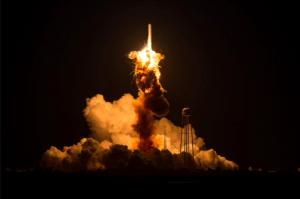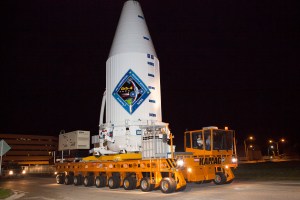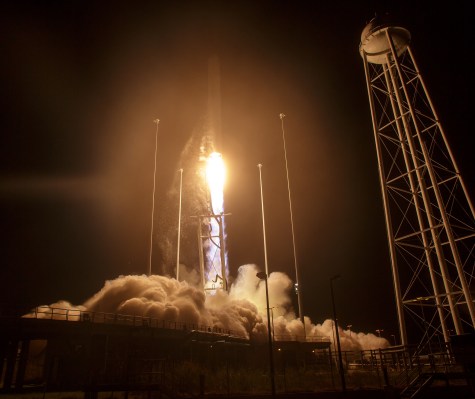The Orbital ATK Antares rocket – the same rocket that exploded on its way to the International Space Station two years ago – returned to flight today with a much-anticipated launch. Lifting off from NASA’s Wallops Flight Facility in Virginia, the Antares rocket is now on its way to deliver the Cygnus spacecraft filled with over 5,000 pounds of cargo to crew members aboard the ISS.
Today’s launch was particularly special for Orbital ATK, a company contracted by NASA to deliver 66,000 pounds of cargo to the ISS through 2018. After their Antares rocket exploded during a launch in 2014, destroying thousands of pounds of experiments and cargo bound for the space station, Orbital ATK worked for two years to upgrade that rocket and prepare for its return to flight.

Orbital ATK Antares rocket explosion on October 28th 2014 / Image courtesy of NASA
The most notable change in the upgraded Antares is the main engine. Interestingly, the exact cause of the 2014 explosion was never agreed upon, but Orbital ATK believed it was related to a machining error in the AJ-26 engines used on Antares. Because of this, the company replaced those engines with Russian-made RD-181 engines.
In order to satisfy their commercial resupply services requirements for NASA while they worked to upgrade Antares, Orbital ATK hired fellow launch provider ULA to fly the Cygnus spacecraft on two supply missions to the ISS using Atlas rockets.
Today, the Orbital ATK was finally able to fly Cygnus on top of their own rocket again. The RD-181-equipped Antares rocket carried Cygnus, which housed science experiments and supplies for the ISS crew, for their fifth operational cargo resupply mission for NASA.

One of Orbital ATK’s Cygnus spacecraft that flew on top of an Atlas rocket / Image courtesy of NASA
Along with crew supplies, spacewalk equipment and computer resources, Cygnus will bring over 1,000 pounds of science investigations to the five crew members on the ISS. One of those experiments is Saffire-II, the second Saffire experiment to be conducted inside Cygnus in order to study realistic flame propagation in space.
Like Saffire-I, the experiment will begin only after Cygnus has left the space station. By igniting a material and watching how it burns throughout a chamber in the spacecraft, NASA researchers on the ground will analyze how fire moves and spreads in microgravity. The Saffire series are intended to help inform the selection of materials and identify proper flame-mitigation strategies for future missions.
Cygnus will spend over a month attached to the ISS. In late November, the spacecraft will be filled with about 3,000 pounds of trash and then released to begin its descent back to Earth. During reentry through Earth’s atmosphere, the spacecraft, along with trash and Saffire-II, will be destroyed.
